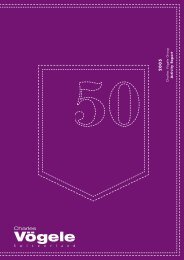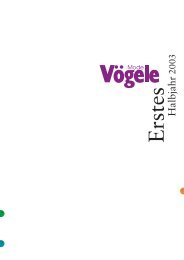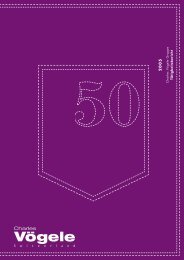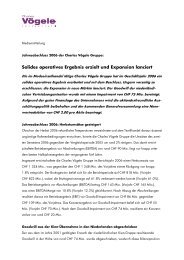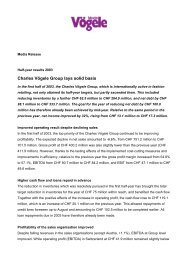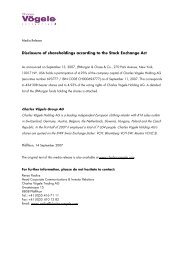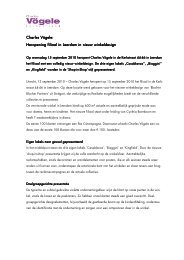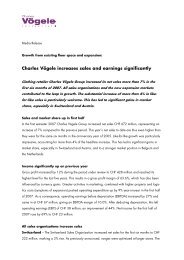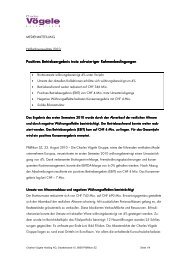report
report
report
You also want an ePaper? Increase the reach of your titles
YUMPU automatically turns print PDFs into web optimized ePapers that Google loves.
The amounts shown under shareholders’ equity are charged to the income statement<br />
in the period in which the underlying transaction is also booked, except in the<br />
case of non-monetary assets in the initial valuation on purchase costs.<br />
When a hedging instrument expires or is sold, or when a hedge no longer meets<br />
the criteria for hedge accounting, any cumulative gain or loss existing in equity at<br />
that time remains in equity and is recognized when the underlying transaction is<br />
ultimately recognized in the income statement. When a forecast transaction is no<br />
longer expected to occur, the cumulative recorded gain or loss in equity is immediately<br />
transferred to the income statement.<br />
2.14 Property, plant and equipment<br />
> Land and buildings<br />
Land and buildings include properties in Switzerland that are used mainly as stores,<br />
as well as distribution centres in Switzerland, Germany and Austria. Land and<br />
buildings are recognized at acquisition cost less accumulated depreciation for build-<br />
ings and any impairments (see Note 2.17). This valuation is periodically checked<br />
on its recoverability by an independent external expert. Buildings are depreciated on<br />
a straight-line basis over a period of 40 years. Buildings in leasehold are depreciated<br />
over the lease-hold period up to a maximum of 40 years. Land is not depreciated.<br />
> Equipment<br />
Equipment includes store fittings, technical warehouse equipment, computer<br />
hardware, office fixtures and fittings and other tangible assets used in operations.<br />
They are capitalized if the company derives a future economic benefit associated<br />
with them. Valuation is at acquisition cost less accumulated depreciation and<br />
impairments if necessary (see Note 2.17). The depreciation is carried out using the<br />
straight-line method and is normally based on their estimated useful life within<br />
a range of 5 to 15 years.<br />
2.15 Financial instruments (assets)<br />
All purchases and sales of financial assets are recognized on the day the Group<br />
commits to the purchase or sale. Financial assets that are not recorded in the<br />
income statement at fair value are recognized on purchase at fair value plus transaction<br />
costs. Financial assets that are recorded in the income statement at fair<br />
value are initially recognized at fair value, which is usually equivalent to the purchase<br />
price, and transaction costs are charged to the income statement. Financial assets<br />
are derecognized as soon as the rights to cash flows from the asset expire or are transferred<br />
and the Group has assigned all the material risks and benefits associated<br />
with ownership thereof.<br />
Financial assets are divided into the following four categories. The choice of category<br />
depends on the purpose for which the financial asset was acquired.<br />
15<br />
Financial Commentary | Income Statement and Balance Sheet | Cash Flow and Changes in Equity | Notes | Statutory Auditors




